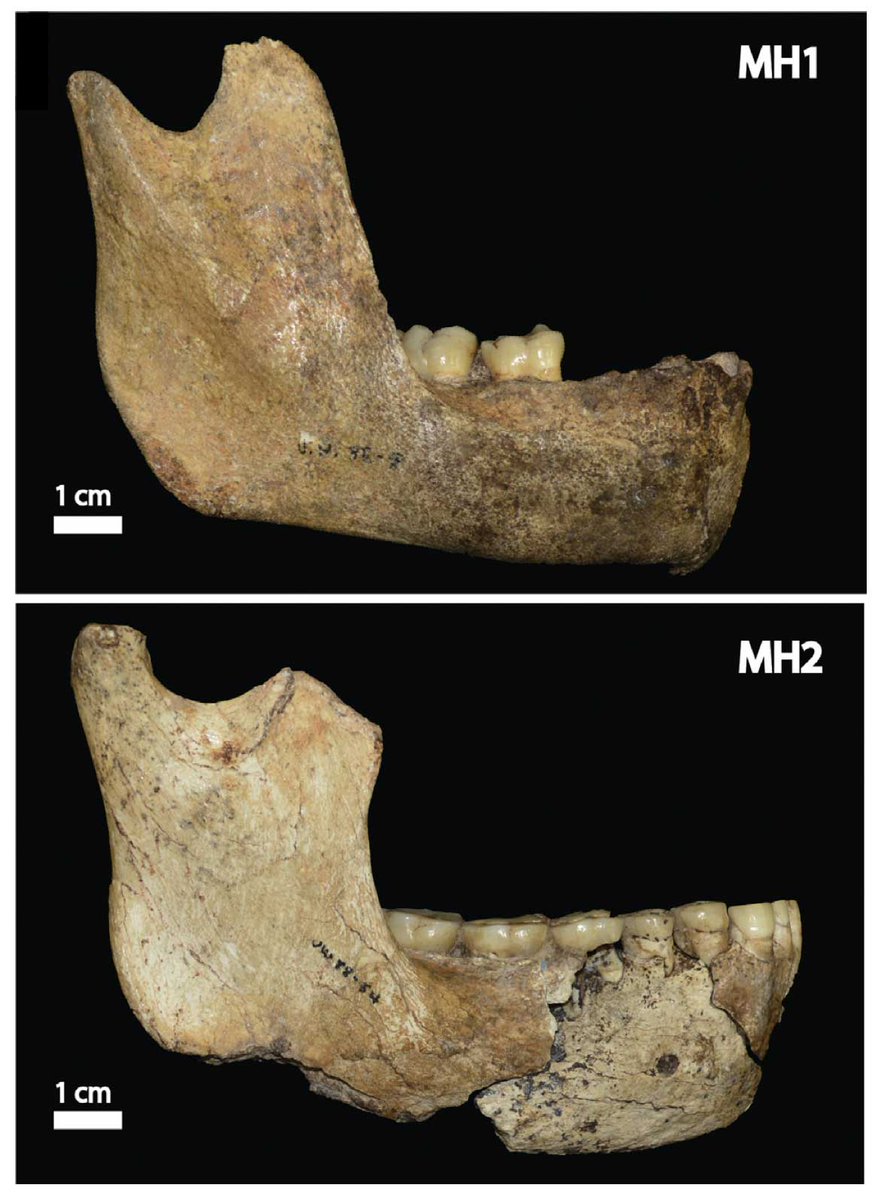Discover and read the best of Twitter Threads about #hominin
Most recents (6)
"We evolved to be physically active. But most of us avoid physical activity."
The Active Grandparents Hypothesis
Daniel Lieberman, @Harvard
SFI Colloquium, streaming now:


The Active Grandparents Hypothesis
Daniel Lieberman, @Harvard
SFI Colloquium, streaming now:


"We evolved from #apes and apes are couch potatoes."
Daniel Lieberman, @Harvard
SFI Colloquium, streaming now:
#evolution #hominin #anthropology #physiology



Daniel Lieberman, @Harvard
SFI Colloquium, streaming now:
#evolution #hominin #anthropology #physiology




"Your average hunter-gatherer walks from New York to LA every year."
Daniel Lieberman, @Harvard
SFI Colloquium, streaming now:




Daniel Lieberman, @Harvard
SFI Colloquium, streaming now:




"A new dating program using the isochron method for burial dating has established an absolute age of 2.22 ± 0.09 Ma for a large portion of the Lower Bank, containing the earliest Oldowan stone tools and fossils of Paranthropus robustus in South Africa." doi.org/10.1016/j.jhev… 

A hint of the social behavior of early Homo erectus comes from the earliest known #hominin to survive with near total loss of teeth, 1.8 million years ago. Some wild primates also survive years with little functional dentition. #paleoanthropology #FossilFriday 

For years, anthropologists have looked at the survival of older people with tooth loss as a possible indication of social caring, empathy, and value of tradition and knowledge to social groups—once with Neandertals, more recently with H. erectus. #paleoanthropology 

Some have criticized inferences about social care in these human relatives, by pointing out other primates that sometimes survive. This wild chimpanzee skull in the collection of the @goCMNH is a great example, with loss of all but one molar and premolars. 

The MH2 #hominin mandible is still being built, fragment by fragment, as pieces are recovered from Malapa and prepared in the lab. The skull of this adult Australopithecus sediba individual may be found within the breccia as well. #paleoanthropology 

If you're following this series of illustrations, you may recognize that MH2 is my first repeat, as I earlier featured the MH2 pelvis. The Malapa skeletons are amazing examples of discovery, as each piece emerges from the site, it allows us to test new hypotheses.
Some scientists claimed that the difference between MH1 and MH2 mandibular ramus shape must mean that one is Australopithecus and one Homo. Ritzman and coworkers (2016) examined this, finding them compatible with normal within-species variation. dx.doi.org/10.1016/j.jhev… 

Everybody has heard of Acheulean handaxes. But did you know sometimes ancient hominins made them out of elephant bones? This one is from Fontana Ranuccio, Italy. Zutovski and Barkai (2016) suggest that fresh elephant bone was better for flaking. #hominin dx.doi.org/10.1016/j.quai… 

When elephant bone artifacts were found at Bilzingsleben, many archaeologists pooh-poohed them as meaningless. Most Upper Paleolithic bone artifacts were fashioned by grinding, not flaking. "Flaked bone shows that they couldn't recognize the properties of the raw material." 

Zutovski and Barkai (2016) show how much that picture has changed. Some #hominin groups were masters of elephant bone, and elephant bifaces have been found across 1.2 million years in Europe, Africa, and West Asia. dx.doi.org/10.1016/j.quai… 

Phytoliths are microscopic silica structures from plants. In the sediments of archaeological sites, they can show evidence for #hominin use of wood for burning, grasses for bedding. These are from Pinnacle Point, South Africa. doi.org/10.1371/journa… 

The bottom six phytoliths here come from restios, relatives of grasses and sedges that are found in the Cape Fynbos biome. Esteban and coworkers think at Pinnacle Point, they might have been used in sleeping mats up to 90,000 years ago. doi.org/10.1371/journa… 

At Sibudu Cave, South Africa, from 77,000 years ago hominins came back to the cave again and again, making layers of bedding topped with aromatic plants, and burning to clean them out. The layers are clearly visible. doi.org/10.1126/scienc… 



